COVID-19: TCTMD’s Daily Dispatch for December

TCTMD reporter Todd Neale is keeping up on breaking news and peer-reviewed research related to COVID-19 and will update daily. If you have something to share, tell us. All of our COVID-19 coverage can be found on our COVID-19 Hub.
December 30, 2020
 The US Centers for Disease Control and Prevention (CDC) updated its guidance around New Year’s Eve celebrations. Although it provides some tips for people who are planning to gather with others outside their household, it says “the safest way to celebrate the new year is to celebrate at home with the people who live with you or virtually with friends and family. Staying home is the best way to protect yourself and others.”
The US Centers for Disease Control and Prevention (CDC) updated its guidance around New Year’s Eve celebrations. Although it provides some tips for people who are planning to gather with others outside their household, it says “the safest way to celebrate the new year is to celebrate at home with the people who live with you or virtually with friends and family. Staying home is the best way to protect yourself and others.”
The United Kingdom is heading into the new year with an additional weapon in the fight against a resurgence of SARS-CoV-2 infections from a more-transmissible form of the virus, becoming on Wednesday the first country to approve the COVID-19 vaccine from the University of Oxford and AstraZeneca, Reuters reports. The UK government has already ordered 100 million doses of the vaccine, which is not likely to be approved anytime soon by the European Medicines Agency. An EMA official said the agency has not received enough information to warrant a conditional marketing license.
Meanwhile, that highly contagious form of SARS-CoV-2 circulating in the UK has been detected in the United States for the first time, in a Colorado man in his 20s, NPR reports. It’s not clear how the man, who has not been traveling, got it. “The individual has no close contacts identified so far, but public health officials are working to identify other potential cases and contacts through thorough contact tracing interviews,” a statement from Colorado’s governor said.
Frustration is building over the speed at which the US vaccination program is unfolding, STAT reports. The arrival of the UK variant in the US “will only add to the urgency of the COVID-19 vaccination campaign currently underway, which some public health experts have criticized as going too slowly. The Trump administration has shipped more than 11 million doses of the two available COVID-19 vaccines, but just over 2.1 million people nationwide have received a shot since vaccinations began December 14, according to data from the [CDC].”
Today is the first ever International Day of Epidemic Preparedness. In the past 12 months, lives and livelihoods have been turned upside down by #COVID19. But over the years @WHO and our partners have warned that the world is not prepared for a pandemic.pic.twitter.com/lZiUD41S3U
— Tedros Adhanom Ghebreyesus (@DrTedros) December 27, 2020
Sunday was the first International Day of Epidemic Preparedness, and World Health Organization (WHO) Director-General Tedros Adhanom Ghebreyesus, MD, marked it by warning that there will be more pandemics that follow COVID-19. “We must all learn the lessons the pandemic is teaching us,” he said in a video, stressing the need to invest in preparations for future crises. “It requires an all-of-government and all-of-society approach.”
Compounding the bad news about the slow rate of COVID-19 vaccinations in the United States are data in JAMA showing that the proportion of American adults who said they are at least somewhat likely to receive a shot fell from 74% in early April to 56% in early December. That’s “despite the early November press releases of high vaccine efficacy for two vaccines in phase III trials, although prior to emergency use authorization.” In a related viewpoint, Lawrence Gostin, JD, and colleagues discuss whether vaccine mandates would be lawful and ethical.
Spain plans to keep a registry of people who refuse a COVID-19 vaccine, Axios reports. And that information, the country’s health minister said, will be shared with other European nations, although it will not be publicly disclosed.
German pilot makes point with syringe in the sky https://t.co/n5ZJd5GOM0 pic.twitter.com/AIRBg90XUz
— Reuters (@Reuters) December 27, 2020
A Yahoo Life story goes into why the COVID-19 pandemic may lead to an increase in so-called “super gonorrhea.” It relates to the overuse of antibiotics, according to a spokesperson from the WHO. Azithromycin, a common treatment for gonorrhea, has been prescribed frequently in 2020, especially early on based on preliminary data suggesting that it could be beneficial in COVID-19 when used in combination with hydroxychloroquine.
A German pilot flew 200 kilometers to trace a giant syringe in the sky to raise awareness about the start of the COVID-19 vaccination campaign in Europe, Reuters reports. “There are still relatively many people opposing the vaccination and my action may be a reminder for them to think about the topic, to get things moving,” the 20-year-old pilot said.
December 28, 2020
Last Thursday, the US Centers for Disease Control and Prevention (CDC) said all air travelers from the United Kingdom will be required to have a negative COVID-19 test in the 72 hours before boarding a flight to the United States. “The public health authorities in the United Kingdom recently announced the discovery of a new variant of SARS-CoV-2,” the agency explained. “Viruses constantly change through mutation, and preliminary analysis in the UK suggests that this new variant may be up to 70% more transmissible than previously circulating variants.”
A UK official said Monday that British regulatory approval of the COVID-19 vaccine from the University of Oxford and AstraZeneca could speed the lifting of restrictions, which were tightened recently in response to the new strain, Reuters reports. The vaccine still needs to be vetted by regulators, “but if it was approved there would be a ‘significant increase’ in vaccine available.” The Pfizer/BioNTech vaccine is already being administered.
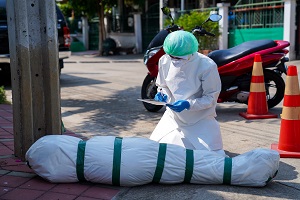
The number of deaths in Russia spiked 20.5% since the COVID-19 pandemic began in April, according to statistics tallied by Reuters. “The total figure, at 241,193 more deaths in April-November 2020 than during the same period the previous year, is significantly higher than the preliminary pandemic death toll of 55,265 so far, reported on a cumulative daily basis by the government’s coronavirus crisis center. This figure includes deaths recorded in December.”
SARS-CoV-2 cases are surging in Africa, raising concerns about what could happen on the continent in the coming months, according to a story in the New York Times. “When the pandemic began, global public health officials raised grave concerns about the vulnerabilities of Africa. But its countries overall appeared to fare far better than those in Europe or the Americas, upending scientists’ expectations. Now, the coronavirus is on the rise again in swaths of the continent, posing a new, possibly deadlier threat.”
On Friday, the number of COVID-19 hospitalizations in the state of New York reached 6,950, the highest tally since May 12, NBC New York reports. There were also 12,446 new cases reported that day, which was the third highest daily total recorded so far. The situation there and around the world could get worse following the holidays, Anthony Fauci, MD, director of the National Institute of Allergy and Infectious Diseases (NIAID), warned over the weekend. “We very well might see a postseasonal—in the sense of Christmas, New Year’s—surge, and as I’ve described it, as a surge upon a surge,” Fauci said on CNN.
 The desire to get vaccinated is starting to cause conflicts among healthcare workers, the New York Times reports. At a children’s hospital in Manhattan, word got out that a line for vaccination was unguarded and anybody could get the shot regardless of priority. “Under the rules, the most exposed healthcare employees were supposed to go first, but soon those from lower-risk departments, including a few who spent much of the pandemic working from home, were getting vaccinated. The lapse, which occurred within 48 hours of the first doses arriving in the city, incited anger among staff members—and an apology from the hospital.”
The desire to get vaccinated is starting to cause conflicts among healthcare workers, the New York Times reports. At a children’s hospital in Manhattan, word got out that a line for vaccination was unguarded and anybody could get the shot regardless of priority. “Under the rules, the most exposed healthcare employees were supposed to go first, but soon those from lower-risk departments, including a few who spent much of the pandemic working from home, were getting vaccinated. The lapse, which occurred within 48 hours of the first doses arriving in the city, incited anger among staff members—and an apology from the hospital.”
Pain is a common manifestation of COVID-19, according to a study in Mayo Clinic Proceedings. Of 169 patients, 38.5% reported an active pain condition, most commonly headache (30.1%), chest pain (23.6%), and spinal pain (24.7%). Interestingly, pain was associated with lower odds of ICU admission and death. “Reasons why pain may be associated with reduced mortality include that an intense systemic stimulus (eg, respiratory distress) might inhibit pain signals or that the catecholamine surge associated with severe respiratory distress might attenuate nociceptive signaling,” the researchers say.
A phase III trial of the COVID-19 vaccine developed by Novavax has begun, the US National Institutes of Health (NIH) announced. The trial, funded by the NIAID and the Biomedical Advanced Research and Development Authority (BARDA) and performed in collaboration with the federal government’s Operation Warp Speed, will enroll about 30,000 people in the United States and Mexico.
 A patient page in JAMA Pediatrics summarizes what’s known about how SARS-CoV-2 infection affects children. “Overall, we have learned that children get sick less often than adults, but a few children have gotten severely sick,” the authors write, adding that “parents need to balance their children’s needs to stay safe with their needs to learn and socialize with peers.”
A patient page in JAMA Pediatrics summarizes what’s known about how SARS-CoV-2 infection affects children. “Overall, we have learned that children get sick less often than adults, but a few children have gotten severely sick,” the authors write, adding that “parents need to balance their children’s needs to stay safe with their needs to learn and socialize with peers.”
December 24, 2020
Today is National Institute of Allergy and Infectious Diseases director Anthony Fauci’s 80th birthday—he was caught off-guard by a Zoom surprise party last Sunday, organized by his wife. She arranged for friends to dial in “from across the US as well as from Italy, Switzerland and the Caribbean, all to celebrate the man who even now, a newly minted octogenarian, is centrally responsible for helping ensure birthday parties a year from now might be held safely in person again,” the Guardian reports.
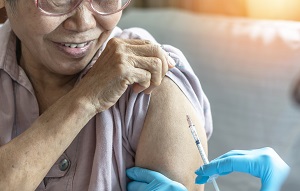 The New York Times is tracking how many Americans have received a COVID-19 vaccine. As of Wednesday, the tally was 1.1 million. The data are also broken down by state. “The federal government said Wednesday that it has delivered more than 9.4 million doses to states, territories, and federal agencies,” the Times noted.
The New York Times is tracking how many Americans have received a COVID-19 vaccine. As of Wednesday, the tally was 1.1 million. The data are also broken down by state. “The federal government said Wednesday that it has delivered more than 9.4 million doses to states, territories, and federal agencies,” the Times noted.
US officials from Operation Warp Speed admitted Wednesday that the speed with which shots are being administered is slower than expected, USA Today reports. They said the government will come close to delivering the 20 million doses promised in December, with about 15.5 million doses expected to be distributed by the end of the year. Another 5 million would be delivered between January 4 and 6.
There is another new SARS-CoV-2 variant circulating, this time in Nigeria, and it’s different from new strains recently detected elsewhere, according to the Africa Centers for Disease Control and Prevention. “The discovery could add to new alarm in the pandemic after similar variants were announced in Britain and South Africa, leading to the swift return of international travel restrictions and other measures just as the world enters a major holiday season,” the Associated Press reports. The new strains have already been blamed for slowing down vaccine rollouts in the UK.
A Reuters special report provides details on the UK trial of the COVID-19 vaccine from the University of Oxford and AstraZeneca, in which many participants inadvertently received a half dose. Data released in November showed that the vaccine was more effective in those who received the half dose followed by a full booster dose versus those who received two full doses. But investigators don’t know why. “Now a Reuters review of hundreds of pages of clinical trial records, as well as interviews with scientists and industry figures, provides the most detailed account to date of what went wrong with the dosing in the Oxford/AstraZeneca vaccine study. The review found that Oxford researchers were responsible for what their own clinical trial documents called ‘a potency miscalculation.’”
Last Christmas, the town of Bethlehem in Palestine saw tens of thousands of visitors celebrating the holiday in the biblical birthplace of Jesus, but—like most other parts of the world—it has not been spared from the effects of COVID-19 this year, according to a BBC News story. “Unemployment has shot up and the town's economy—which, for centuries, has relied on Christian pilgrims—is in tatters.”
 TCTMD’s Shelley Wood spoke with the lead author of the Circulation: Cardiovascular Quality and Outcomes study published earlier this week looking at the impact of emergency room “non-attendance” for acute cardiac symptoms. “For MI and other cardiac diseases, it is . . . plausible to assume that we might observe short-term consequences,” said Michail Katsoulis, PhD. “Unfortunately this negative prediction came true.” For every 12 cardiac admissions to hospital emergency rooms across England that never occurred during the first month of the COVID-19 pandemic, one cardiac death would have been prevented or delayed, Katsoulis et al. concluded.
TCTMD’s Shelley Wood spoke with the lead author of the Circulation: Cardiovascular Quality and Outcomes study published earlier this week looking at the impact of emergency room “non-attendance” for acute cardiac symptoms. “For MI and other cardiac diseases, it is . . . plausible to assume that we might observe short-term consequences,” said Michail Katsoulis, PhD. “Unfortunately this negative prediction came true.” For every 12 cardiac admissions to hospital emergency rooms across England that never occurred during the first month of the COVID-19 pandemic, one cardiac death would have been prevented or delayed, Katsoulis et al. concluded.
The presence of antibodies to SARS-CoV-2—specifically anti-spike or anti-nucleocapsid IgG antibodies—is associated with a reduced risk of reinfection over the next 6 months, according to a study of UK healthcare workers published in the New England Journal of Medicine. “Ongoing follow-up is needed in this and other cohorts, including the use of markers of both humoral and cellular immunity to SARS-CoV-2, to assess the magnitude and duration of protection from reinfection, symptomatic disease, and hospitalization or death and the effect of protection on transmission,” the researchers say.
Researchers looking into air contamination with SARS-CoV-2 in hospital settings found that 17.4% of air samples taken from close patient environments were positive for RNA from the virus, with a significantly higher rate in ICU versus non-ICU settings (25.2% vs 10.7%). Viability of the virus was found in 9% of cultures. “High viral loads found in toilets and bathrooms, staff areas, and public hallways suggest that these areas should be carefully considered,” researchers write in JAMA Network Open.
 Going into the Christmas and New Year holidays, there are more than 78.8 million confirmed COVID-19 cases around the world, with more than 1.7 million deaths, according to the Johns Hopkins COVID-19 Dashboard. The United States leads in both categories (about 18.5 million and 326,000, respectively).
Going into the Christmas and New Year holidays, there are more than 78.8 million confirmed COVID-19 cases around the world, with more than 1.7 million deaths, according to the Johns Hopkins COVID-19 Dashboard. The United States leads in both categories (about 18.5 million and 326,000, respectively).
December 23, 2020
 SARS-CoV-2 has now spread to every continent, having reached a remote research station in Antarctica, Reuters reports. Chile’s armed forces said at least 36 people, a mix of army personnel and civilian contractors, have been infected at its Bernardo O’Higgins base.
SARS-CoV-2 has now spread to every continent, having reached a remote research station in Antarctica, Reuters reports. Chile’s armed forces said at least 36 people, a mix of army personnel and civilian contractors, have been infected at its Bernardo O’Higgins base.
Three clinical trials evaluating the effects of full anticoagulant doses in patients with COVID-19—REMAP-CAP, ACTIV-4, and ATTACC—have paused enrollment of patients with the most severe cases, the US National Institutes of Health (NIH) announced Tuesday. “Among critically ill COVID-19 patients requiring [ICU] support, therapeutic anticoagulation drugs did not reduce the need for organ support,” according to a press release. “Enrollment continues for moderately ill hospitalized COVID-19 patients in the trials.”
Over the first 6 months of the pandemic in the United States, mortality rates declined among adults hospitalized with COVID-19, researchers report in JAMA Internal Medicine. Hospitals performed better when the prevalence of the disease was lower in the surrounding communities. The findings “provide a reason for optimism that our healthcare system has improved in our ability to care for persons with COVID-19,” authors of an accompanying editorial write, noting that similar gains have been seen in other studies.
 In the New York Times, Carl Zimmer and Benedict Carey detail what is known about the more-infectious strain of SARS-CoV-2 currently circulating in the United Kingdom. Though it spreads more easily, there is no strong evidence that it causes more severe disease, they write.
In the New York Times, Carl Zimmer and Benedict Carey detail what is known about the more-infectious strain of SARS-CoV-2 currently circulating in the United Kingdom. Though it spreads more easily, there is no strong evidence that it causes more severe disease, they write.
Moderna has joined Pfizer/BioNTech in saying that it will test its COVID-19 vaccine against this new variant, Forbes reports. The vaccine makers “said Tuesday that they are confident their vaccines remain effective against the mutated virus, although testing to confirm this may take weeks.” Moderna also announced that its vaccine was cleared for use in Canada earlier today.
Pfizer/BioNTech has a struck a deal with the US government to provide an additional 100 million doses of vaccine to Americans, doubling the amount previously agreed upon, according to Bloomberg News. All doses are expected to be delivered to Operation Warp Speed by the end of July.
The Advisory Committee on Immunization Practices (ACIP), which provides recommendations to the US Centers for Disease Control and Prevention (CDC), published its update to interim guidance around the allocation of COVID-19 vaccines, announced earlier this week. The next priority groups after healthcare workers and long-term care facility residents (phase 1a) are people 75 and older and non-healthcare frontline essential workers (phase 1b), followed by people ages 65 to 74, younger people with high-risk medical conditions, and other essential workers (phase 1c).
Results of the phase III ACTIV-3 trial testing an investigational monoclonal antibody in hospitalized COVID-19 patients without end-organ failure have been published in the New England Journal of Medicine. Relative to placebo, the antibody—called LY-CoV555—did not have a beneficial effect on sustained recovery during a 90-day period. The trial was stopped early back in October.
 A STAT story cautions against “vaccine euphoria” now that immunization programs have begun because we still have a long way to go before things are back to normal: “The advent of COVID-19 vaccines is a medical miracle, yet also a tantalizing and dangerous psychological milestone: It’s not the beginning of the end of the pandemic but, more likely, ‘the end of the beginning,’ to borrow a phrase from Winston Churchill.”
A STAT story cautions against “vaccine euphoria” now that immunization programs have begun because we still have a long way to go before things are back to normal: “The advent of COVID-19 vaccines is a medical miracle, yet also a tantalizing and dangerous psychological milestone: It’s not the beginning of the end of the pandemic but, more likely, ‘the end of the beginning,’ to borrow a phrase from Winston Churchill.”
Pregnant women infected with SARS-CoV-2 in the third trimester are unlikely to pass virus to their newborns, according to a study in JAMA Network Open. “In this cohort study, there was no evidence of placental infection or definitive vertical transmission of SARS-CoV-2,” the researchers write.
December 22, 2020
At least 95% of ICU beds were full at the end of last week at almost one in five US hospitals, the New York Times reports. “Nationwide, 78% of intensive care hospital beds were occupied.” The Times has an interactive map where users can search different locations to check ICU bed capacity.
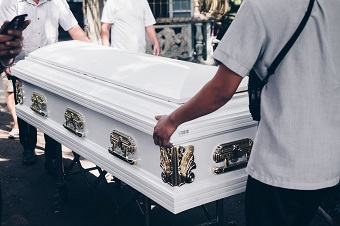 Also interactive is the Guardian’s map showing which parts of the world have the most COVID-19 cases and deaths. The case tally is nearly 77 million worldwide, while deaths have passed 1.6 million, with new daily deaths hovering shy of 10,000. Overall US deaths in 2020 are expected to pass 3 million, the AP reports, making 2020 by far the deadliest in history. The increase—at least 400,000 more than 2019—is “due mainly to the coronavirus pandemic.”
Also interactive is the Guardian’s map showing which parts of the world have the most COVID-19 cases and deaths. The case tally is nearly 77 million worldwide, while deaths have passed 1.6 million, with new daily deaths hovering shy of 10,000. Overall US deaths in 2020 are expected to pass 3 million, the AP reports, making 2020 by far the deadliest in history. The increase—at least 400,000 more than 2019—is “due mainly to the coronavirus pandemic.”
Many countries have shut their borders to the United Kingdom amid a surge in cases of a new, more-infectious strain of the virus. Earlier today, however, the European Union recommended that bans be lifted.
A chief executive at BioNTech said the company is testing the efficacy of the vaccine developed in partnership with Pfizer against the new variant and expects results in the next 2 weeks. He added: “There is no reason to be concerned or worried until we get the data,” Reuters reports.
The European Medicines Agency (EMA) announced it will be holding a second public meeting, January 8, 2021, to “inform European citizens about the assessment, approval, and rollout of new COVID-19 vaccines.” The EMA’s announcement also includes the newly unveiled name for the BioNTech/Pfizer vaccine: Comirnaty.
One of the most recognizable faces of the COVID-19 pandemic, Anthony Fauci, MD, director of the National Institute of Allergy and Infectious Diseases, got vaccinated on live TV.
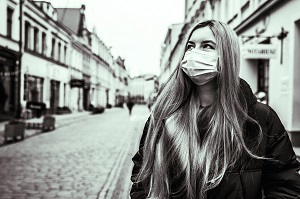 In a Lancet comment, a group of COVID-19 survivors who have had symptoms that lingered more than 6 months argue that “long COVID” guidelines need to reflect the lived experience of people like them, addressing the very different symptoms and the difficulties faced in accessing care. Among the list of conditions faced by members of the group—which included doctors, nurses, and other health professionals—are myocarditis or pericarditis, microvascular angina, cardiac arrhythmias, and thromboembolic disease.
In a Lancet comment, a group of COVID-19 survivors who have had symptoms that lingered more than 6 months argue that “long COVID” guidelines need to reflect the lived experience of people like them, addressing the very different symptoms and the difficulties faced in accessing care. Among the list of conditions faced by members of the group—which included doctors, nurses, and other health professionals—are myocarditis or pericarditis, microvascular angina, cardiac arrhythmias, and thromboembolic disease.
Researchers writing in The Lancet: Microbe observe that SARS-CoV-2 infection “induces an antibody response targeting multiple antigens that changes over time.” Their paper reviews those responses with the aim of taking “advantage of this complexity to develop more accurate serological diagnostics.”
 In the early months of COVID-19, healthcare workers were hailed as heroes, but as the pandemic wore on and adherence to public health policies became a form of political posturing, many physicians felt compelled to do something they typically avoid: speak out. TCTMD's Caitlin Cox explores how 2020 was the year that cardiologists and clinicians more broadly found their voices across a range of polarizing topics.
In the early months of COVID-19, healthcare workers were hailed as heroes, but as the pandemic wore on and adherence to public health policies became a form of political posturing, many physicians felt compelled to do something they typically avoid: speak out. TCTMD's Caitlin Cox explores how 2020 was the year that cardiologists and clinicians more broadly found their voices across a range of polarizing topics.
A one-size-fits-all approach to SARS-CoV-2 testing is “unsuitable” for controlling the spread of COVID-19, argue the authors of a perspective in Science, particularly if it relies primarily on quantitative PCR assays. These highly specific assays detect “minute” viral levels needed for accurate diagnostics but can’t be scaled up for widespread use. “Diagnostics, screening, and surveillance serve different purposes, demand distinct strategies, and require separate approval mechanisms,” they write. “By supporting the innovation, approval, manufacturing, and distribution of simpler and cheaper screening and surveillance tools, it will be possible to more effectively limit the spread of COVID-19 and respond to future pandemics.
The US Department of Health and Human Services is partnering with chain and independent pharmacies to facilitate access to COVID-19 vaccines and will offer them at no cost, Rita Rubin reports in JAMA.
Also in JAMA, Michael J. Green, MD, and Shelley Wall, MScBMC, PhD, review the best graphics in medicine that were published online in 2020. “Unsurprisingly, some of the most important and interesting work in graphic medicine in 2020 related to the coronavirus pandemic,” they write. “The sheer volume of comics-based material related to coronavirus disease 2019 is immense and growing daily.”
Shelley Wood contributed today’s Dispatch.

December 21, 2020
A new strain of SARS-CoV-2 that appears to be more transmissible than others has been circulating in the United Kingdom, prompting countries around the world to close their borders to the nation. That is “heightening global panic, causing travel chaos, and raising the prospect of UK food shortages just days before the Brexit cliff edge,” Reuters reports. The variant is up to 70% more infectious, according to Prime Minister Boris Johnson.
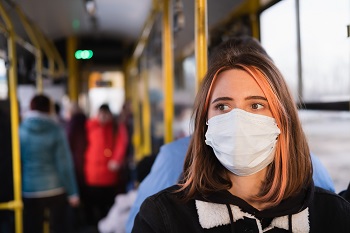 In the New York Times, Apoorva Mandavilli explores the implications of this new variant and a similar one circulating in South Africa. Of note, several experts urged caution when thinking about what these mutations mean for vaccine efficacy, “saying it would take years—not months—for the virus to evolve enough to render the current vaccines impotent.”
In the New York Times, Apoorva Mandavilli explores the implications of this new variant and a similar one circulating in South Africa. Of note, several experts urged caution when thinking about what these mutations mean for vaccine efficacy, “saying it would take years—not months—for the virus to evolve enough to render the current vaccines impotent.”
The European Medicines Agency (EMA) has recommended granting a conditional marketing authorization for the COVID-19 vaccine from Pfizer and BioNTech, to be used in people 16 and older, the agency announced Monday. This is the first such authorization issued for use in the European Union.
A third Alaskan healthcare worker—this one in Fairbanks—has experienced anaphylactic symptoms after receiving the Pfizer/BioNTech vaccine, Reuters reports. “The healthcare worker was treated in the hospital’s emergency room with epinephrine and released about 6 hours later, Foundation Health Partners said in a written statement.” That follows reports of adverse reactions in two healthcare workers in Juneau. The Fairbanks clinician said in a statement of her own that, despite the reaction, she would recommend the vaccine to anyone “to help our country get immunized, which is needed for the health of all Americans, for the economy, [to] get families hugging again, for getting children back to schools, and to get the country on the other side of this pandemic.”
The US Centers for Disease Control and Prevention (CDC) said on Saturday that it is monitoring these reports of allergic reactions, according to Reuters. The agency made some recommendations in the meantime. “Anyone who had a severe reaction to a COVID-19 vaccine should not get the second dose, the agency said, defining severe as needing the medication epinephrine or treatment in a hospital. People who have had a severe allergic reaction to any ingredient in a COVID-19 vaccine should avoid the vaccine formulation containing the ingredient, CDC said.”
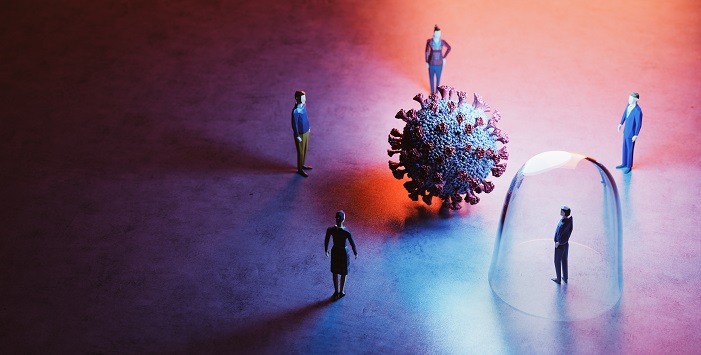 As expected, the US Food and Drug Administration (FDA) issued an emergency use authorization for Moderna’s COVID-19 vaccine on Friday, bringing a second vaccine to the United States as it fights a resurgence of the virus. The vaccine is administered in two doses a month apart. The Advisory Committee on Immunization Practices (ACIP) issued recommendations for its use on Sunday.
As expected, the US Food and Drug Administration (FDA) issued an emergency use authorization for Moderna’s COVID-19 vaccine on Friday, bringing a second vaccine to the United States as it fights a resurgence of the virus. The vaccine is administered in two doses a month apart. The Advisory Committee on Immunization Practices (ACIP) issued recommendations for its use on Sunday.
The vaccine rollout did not go so smoothly at Stanford University, where the initial allocation left out nearly all medical residents and fellows, NPR reports. After residents protested on Friday, Stanford Medicine leadership apologized. However, “the university did not make clear what the process will be now for the first round of doses, the first of which were administered Friday. Residents tell NPR that the system has become chaotic, with some residents able to walk up and receive the vaccine, while others have been told to wait. Some faculty members have pledged to give their vaccine to residents instead.” Healthcare workers in the Mass General Brigham hospital network in Boston have raised similar concerns, according to GBH News.
The majority of Americans support public health interventions to get the pandemic under control, according to the latest survey from STAT and The Harris Poll. Three-quarters of respondents support a public mask mandate and a requirement to get tested if people feel sick. Two-thirds think that Joe Biden, once inaugurated, should ban gatherings with more than 10 people, and just under 60% think the new administration should temporarily close nonessential businesses like restaurants and gyms and mandate vaccination. Support for various measures was higher among Democrats than among Republicans.
Over the weekend, ACIP members also recommended that adults 75 and older and frontline essential workers should be in the second priority group to be vaccinated against COVID-19, STAT reports. After that, the third stage would include adults ages 65 to 74, younger people with high-risk medical conditions, and essential workers who were not included in the second phase.
Further insights about Americans’ attitudes toward vaccination in particular come from survey data in JAMA Network Open. Among those surveyed in the second half of September, 61.4% said they would likely get a COVID-19 vaccine. Support was highest among Democrats (76.6%), followed by independents (58.4%) and Republicans (44.3%). Black respondents were much less likely to say they would get vaccinated than were non-Black respondents (43.6% vs 63.7%).
 An altered mental state or stroke on admission is associated with a significantly increased risk of in-hospital mortality in patients with COVID-19, regardless of the severity of the viral infection, researchers report in Neurology. “While other biomarker factors also predict mortality, measures to identify and treat such patients may be important in reducing overall mortality of COVID-19,” they say.
An altered mental state or stroke on admission is associated with a significantly increased risk of in-hospital mortality in patients with COVID-19, regardless of the severity of the viral infection, researchers report in Neurology. “While other biomarker factors also predict mortality, measures to identify and treat such patients may be important in reducing overall mortality of COVID-19,” they say.
December 18, 2020
Moderna’s COVID-19 vaccine received a thumbs up from a US Food and Drug Administration (FDA) committee yesterday, clearing the way for an emergency use authorization as soon as today, the New York Times reports. That would give the US a second vaccine, expanding much-needed access to more Americans. Also, the story notes, “the Moderna vaccine can be distributed more widely because it can be stored at normal freezer temperatures and, unlike the Pfizer-BioNTech vaccine, does not require ultracold storage. It also comes in much smaller batches, making it easier for hospitals in less populated areas to use quickly.”
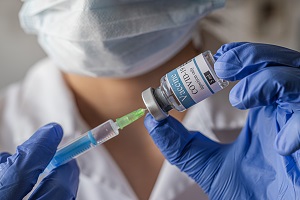 China plans to vaccinate 50 million people (with two doses each) ahead of the peak travel season for Lunar New Year in early 2021, according to a story in the South China Morning Post. Start dates for the immunization program may vary across provinces, but “officials were told that the first 50 million doses would have to be completed by January 15 and the second by February 5.”
China plans to vaccinate 50 million people (with two doses each) ahead of the peak travel season for Lunar New Year in early 2021, according to a story in the South China Morning Post. Start dates for the immunization program may vary across provinces, but “officials were told that the first 50 million doses would have to be completed by January 15 and the second by February 5.”
The COVID-19 situation in California continues to worsen, with ballooning case numbers and virus-related deaths. The state has activated a “mass fatality” program, “which coordinates mutual aid across several governmental agencies,” NPR reports. Southern California is being particularly hard hit, and there are currently no ICU beds available, according to the Los Angeles Times.
By October 2020, COVID-19 had become the third leading cause of death among Americans ages 45 to 84 and the second leading cause of death for the oldest individuals, according to a JAMA viewpoint. But as the virus surges across the US, it is currently the leading cause of death. “This infectious disease has become deadlier than heart disease and cancer, and its lethality may increase further as transmission increases with holiday travel and gatherings and with the intensified indoor exposure that winter brings,” the authors write. Although vaccines offer hope, they add, “that solution will not come soon enough to avoid catastrophic increases in COVID-19-related hospitalizations and deaths. The need for the entire population to take the disease seriously—notably to wear masks and maintain social distance—could not be more urgent.”
Vice President Mike Pence received his COVID-19 vaccine live on television, seeking to shore up public support for vaccinations after U.S. deaths from the coronavirus topped 3,000 for a third straight day https://t.co/Z4hNWRGTvw pic.twitter.com/osgNuUM8yh
— Reuters (@Reuters) December 18, 2020
US Vice President Mike Pence received a COVID-19 vaccine live on television Friday—the third straight day the United States has seen more than 3,000 virus-related deaths—with the aim of bolstering public support for immunization, Reuters reports.
A study in the Lancet Respiratory Medicine using national French data delves into how COVID-19 compares with seasonal influenza. In-hospital mortality is much higher for COVID-19 (16.9% vs 5.8%). “In children, although the rate of hospitalization for COVID-19 appears to be lower than for influenza, in-hospital mortality is higher; however, low patient numbers limit this finding,” the researchers say.
Preliminary data on Regeneron’s investigational antibody cocktail REGN-COV2, first announced via press release in September, have now been published in the New England Journal of Medicine. In the study, the cocktail—which was given to President Donald Trump when he was hospitalized with COVID-19—reduced viral load in nonhospitalized patients, “with a greater effect in patients whose immune response had not yet been initiated or who had a high viral load at baseline.” The FDA gave the treatment an emergency use authorization in November.
Also in NEJM, results of the EMPACTA trial show that treatment with the monoclonal antibody tocilizumab reduced the composite of mechanical ventilation or death within 28 days among patients hospitalized with COVID-19 pneumonia who were not receiving mechanical ventilation initially compared with placebo (12.0% vs 19.3%). All-cause death, however, was not reduced.
Two phase III trials have begun evaluating monoclonal antibodies for the treatment of hospitalized patients with moderate COVID-19 as part of the ACTIV-3 master protocol, the US National Institutes of Health (NIH) announced. One is evaluating VIR-7831, a monoclonal antibody developed through a partnership between GlaxoSmithKline and Vir Biotechnology. The other is evaluating the combination of BRII-196 and BRII-198, two neutralizing monoclonal antibodies manufactured by Brii Biosciences. The NIH also announced that an observational study of SARS-CoV-2 infection and the multisystem inflammatory syndrome in children (MIS-C) has begun.
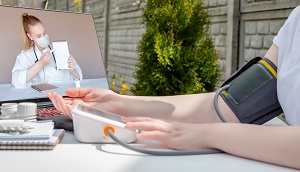 A survey conducted between July 11 and 17 in the United States showed that 95.4% of Health Resources and Services Administration-funded health centers said they provided telehealth services. Those located in urban versus rural areas were more likely to provide more than 30% of visits virtually, according to findings in Morbidity and Mortality Weekly Report.
A survey conducted between July 11 and 17 in the United States showed that 95.4% of Health Resources and Services Administration-funded health centers said they provided telehealth services. Those located in urban versus rural areas were more likely to provide more than 30% of visits virtually, according to findings in Morbidity and Mortality Weekly Report.
December 17, 2020
French President Emmanuel Macron has tested positive for COVID-19, which has forced several European leaders who had come into contact with him to go into isolation, according to BBC News. Macron will remain in charge of the country, which has seen nearly 2.5 million confirmed COVID-19 cases and more than 59,000 deaths. France plans to start its vaccination program on December 27.
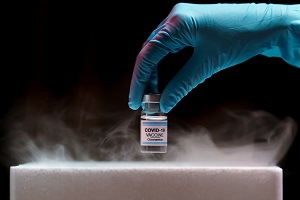 Vials of the COVID-19 vaccine from Pfizer/BioNTech are overfilled, allowing pharmacists to obtain extra doses from each one and potentially expanding the US supply by up to 40%, Politico reports. The vials are supposed to hold five doses, but in some cases there is enough vaccine for six or seven doses. The US Food and Drug Administration (FDA) has said that those extra doses can be used.
Vials of the COVID-19 vaccine from Pfizer/BioNTech are overfilled, allowing pharmacists to obtain extra doses from each one and potentially expanding the US supply by up to 40%, Politico reports. The vials are supposed to hold five doses, but in some cases there is enough vaccine for six or seven doses. The US Food and Drug Administration (FDA) has said that those extra doses can be used.
That unexpected find might come in handy as the vaccine rollout is not going completely smoothly. Reuters reports that there have been “unexpected hitches including some vaccines being stored at excessively cold temperatures and Pfizer reporting potential challenges in its vaccine production,” according to US officials.
A healthcare worker in Juneau, Alaska, was hospitalized and treated for a severe allergic reaction after receiving the Pfizer/BioNTech vaccine, the Anchorage Daily News reports. Another worker who received the vaccine required “brief emergency treatment” but did not experience anaphylaxis. “Multiple healthcare workers and officials on Wednesday were adamant about the importance of people continuing to receive the vaccine, and the state’s top health official said no changes to the vaccination plan were expected.”
Vaccines are coming at a time when the pandemic rages on. In the United States, daily COVID-19 deaths reached a record 3,580 on Wednesday, with hospitalizations rising for the 19th straight day, according to Reuters.
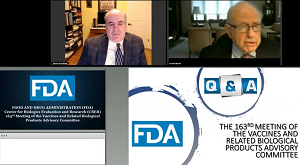
Between March and July, increases in all-cause mortality were seen among US adults ages 25 to 44, according to data in JAMA. “Only 38% of all-cause excess deaths in [this group] recorded during the pandemic were attributed directly to COVID-19,” the investigators note. “Although the remaining excess deaths are unexplained, inadequate testing in this otherwise healthy demographic likely contributed. These results suggest that COVID-19-related mortality may have been underdetected in this population.”
Another research group—this time in Hungary—has used cardiac MRI (CMR) to look for cardiac involvement in COVID-19. Whereas an original CMR paper by Puntmann et al first raised the specter of lasting cardiac damage after SARS-CoV-2 infection, even in asymptomatic adults, and two subsequent papers in athletes suggested that CMR could detect signs of pericardial inflammation and myocarditis, this latest series is more reassuring. Among 12 elite athletes (10 female; mean age 23), all of whom recovered from mild-to-moderate COVID-19, no signs of cardiac involvement were seen on CMR. “Our results do not support the use of routine CMR in troponin-negative, asymptomatic, or mildly symptomatic athletes who recover from this illness,” they write in a research letter published in JACC: Cardiovascular Imaging.
The US Food and Drug Administration (FDA) reissued the emergency use authorization for the BinaxNOW COVID-19 Ag Card Home Test, which is available by prescription. The antigen test detects fragments of SARS-CoV-2 proteins from nasal swab samples and is authorized for use in people suspected of having COVID-19 within 7 days of symptom onset—with self-collected samples in those 15 and older or adult-collected samples in children 4 and older.
 In Maryland, suicide mortality increased during the pandemic among Black residents and decreased among white residents, researchers report in JAMA Psychiatry. “Black individuals are disproportionately impacted by COVID-19,” they note. “Increased suicide mortality in period two, when deaths due to COVID-19 peaked and Maryland was locked down, reflects this difference. The unexpected decrease in suicides among white residents may be due to greater capacity for remote work or benefits from relief efforts.”
In Maryland, suicide mortality increased during the pandemic among Black residents and decreased among white residents, researchers report in JAMA Psychiatry. “Black individuals are disproportionately impacted by COVID-19,” they note. “Increased suicide mortality in period two, when deaths due to COVID-19 peaked and Maryland was locked down, reflects this difference. The unexpected decrease in suicides among white residents may be due to greater capacity for remote work or benefits from relief efforts.”
December 16, 2020
 The World Health Organization’s (WHO) program geared toward getting at least 2 billion doses of COVID-19 vaccine to low- and middle-income countries by the end of 2021—called COVAX—is at risk for failure, according to a Reuters exclusive. In internal documents, “the scheme’s promoters say the program is struggling from a lack of funds, supply risks, and complex contractual arrangements which could make it impossible to achieve its goals.”
The World Health Organization’s (WHO) program geared toward getting at least 2 billion doses of COVID-19 vaccine to low- and middle-income countries by the end of 2021—called COVAX—is at risk for failure, according to a Reuters exclusive. In internal documents, “the scheme’s promoters say the program is struggling from a lack of funds, supply risks, and complex contractual arrangements which could make it impossible to achieve its goals.”
In the BMJ, several papers examine equitable global access to COVID-19 vaccines. One addresses premarket purchase commitments, finding that high-income countries look to be in good shape, with more uncertainty elsewhere. Another provides estimates of target population sizes to inform country-specific immunization strategies. “Taken together, the central message of these papers is clear: the operational challenges of the global COVID-19 vaccination program will be at least as difficult as the scientific challenges associated with rapidly developing safe and effective vaccines,” authors of an accompanying editorial write.
 The US Food and Drug Administration (FDA) has authorized the first over-the-counter, fully at-home diagnostic test for COVID-19. The Ellume COVID-19 Home Test uses a nasal swab and is indicated for anybody 2 years and older. Results are available in as little as 20 minutes. The company said it expects to produce more than 3 million tests in January 2021.
The US Food and Drug Administration (FDA) has authorized the first over-the-counter, fully at-home diagnostic test for COVID-19. The Ellume COVID-19 Home Test uses a nasal swab and is indicated for anybody 2 years and older. Results are available in as little as 20 minutes. The company said it expects to produce more than 3 million tests in January 2021.
Almost one in every five patients hospitalized with COVID-19 in the United States was admitted to the ICU and nearly one-sixth required mechanical ventilation; however, the risk of severe illness varied according to a range of underlying comorbidities and medication use, a nationwide study published in JAMA Network Open suggests. The lead investigator told TCTMD’s Michael O’Riordan it’s upsetting to hear talk, particularly from politicians, undermining the severity of COVID-19. “We talk with data, and this data is from 592 hospitals across the nation,” she said. “This is a severe, severe disease.”
A STAT news story describes the secretive effort to come up with brand names for COVID-19 vaccines. The manufacturers are not likely to reveal the names until they receive full approval from the US Food and Drug Administration (FDA), rather than emergency use authorizations.
 Data from 173 countries, published in PNAS, indicate that increases in ultraviolet radiation reduce local COVID-19 growth rates. The researchers note, however, that “because factors such as social distancing policies have a larger influence than seasonal variation in UV, and high susceptibility to date among the global population permits for rapid transmission, COVID-19 growth is unlikely to exhibit substantial seasonality, at least in the near term.”
Data from 173 countries, published in PNAS, indicate that increases in ultraviolet radiation reduce local COVID-19 growth rates. The researchers note, however, that “because factors such as social distancing policies have a larger influence than seasonal variation in UV, and high susceptibility to date among the global population permits for rapid transmission, COVID-19 growth is unlikely to exhibit substantial seasonality, at least in the near term.”
Using data from 34 European countries and seven non-European countries, researchers found that closing all educational institutions, limiting gatherings to 10 people or less, and closing face-to-face businesses all had a substantial impact on stemming spread of SARS-CoV-2. The additional effect of stay-at-home orders, they report in Science, was comparatively small.
A study of children and teens younger than 18 in Mississippi, published in Morbidity and Mortality Weekly Report, shows that “close contact with persons with COVID-19 and gatherings with persons outside the household and lack of consistent mask use in school were associated with SARS-CoV-2 infection, whereas attending school or child care was not associated with receiving positive SARS-CoV-2 test results.”
December 15, 2020
 The clinical research community, including cardiologists, had to respond quickly once it became clear that COVID-19 was affecting not just the lungs, but also the heart and other organs. By leaning on telehealth, streamlining IRB processes, implementing remote trial monitoring, and taking other steps, investigators have shown that research does not need to plod along but can instead be conducted in a much more rapid way, as a TCTMD feature story makes clear. “I think that research is going to be forever changed,” Harlan Krumholz, MD, said.
The clinical research community, including cardiologists, had to respond quickly once it became clear that COVID-19 was affecting not just the lungs, but also the heart and other organs. By leaning on telehealth, streamlining IRB processes, implementing remote trial monitoring, and taking other steps, investigators have shown that research does not need to plod along but can instead be conducted in a much more rapid way, as a TCTMD feature story makes clear. “I think that research is going to be forever changed,” Harlan Krumholz, MD, said.
There are now more than 300,000 COVID-19 deaths recorded in the United States, where a national immunization program is just getting underway, according to the Johns Hopkins COVID-19 Dashboard. Brazil has second most, at nearly 182,000. Worldwide, there are more than 73 million confirmed cases and 1.6 million deaths.
The European Medicines Agency (EMA) is under pressure from Germany and other nations to authorize a COVID-19 vaccine, according to an Associated Press story. In response, the agency released a statement announcing that it had moved forward a meeting of its human medicines committee to consider conditional marketing authorization for the Pfizer/BioNTech vaccine from December 29 to December 21. The committee “will conclude its assessment at the earliest possible time point and only once the data on the quality, safety, and effectiveness of the vaccine are sufficiently robust and complete to determine whether the vaccine’s benefits outweigh its risks.”
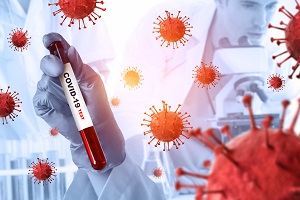 On Monday, scientists from the COVID-19 Genomics UK Consortium released a statement describing how it’s tracking a new SARS-CoV-2 variant spreading in southeast England that has a novel set of mutations. “Efforts are under way to confirm whether or not any of these mutations are contributing to increased transmission,” they say. “There is currently no evidence that this variant (or any other studied to date) has any impact on disease severity, or that it will render vaccines less effective, although both questions require further studies performed at pace.”
On Monday, scientists from the COVID-19 Genomics UK Consortium released a statement describing how it’s tracking a new SARS-CoV-2 variant spreading in southeast England that has a novel set of mutations. “Efforts are under way to confirm whether or not any of these mutations are contributing to increased transmission,” they say. “There is currently no evidence that this variant (or any other studied to date) has any impact on disease severity, or that it will render vaccines less effective, although both questions require further studies performed at pace.”
Moderna’s COVID-19 vaccine is poised to become the second to receive an emergency use authorization (EUA) from the US Food and Drug Administration (FDA). Agency scientists gave it a positive review in documents released ahead of an advisory committee meeting scheduled for Thursday, December 17. The FDA also released a review memorandum outlining what went into its decision to issue an EUA to the Pfizer/BioNTech vaccine.
STAT’s Helen Branswell has written a guide to who can safely get the Pfizer/BioNTech vaccine. She discusses what is known and not known about use of the vaccine in pregnant women, those who are lactating, people with allergies, children and teens younger than 16, and others.
STAT also has a special report looking into what is known about how SARS-CoV-2 spreads, infects, and sickens a year after its emergence. “The coronavirus behind the pandemic presents some vexing dualities,” Andrew Joseph writes. “It’s dangerous enough that it dispatches patients to hospitals in droves and has killed more than 1.6 million people, but mild enough that most people shrug it off. It blocks one arm of the immune system from responding as it takes hold, but lures other parts into dangerous hyperdrive. It homes in on cells high up in the airway—think the nose and throat — but also burrows deeper into the lungs, maximizing infectiousness without ceding how sick it can make people.”
 Within the US Veterans Affairs healthcare system, about one-quarter of patients who survived a COVID-19 hospitalization (27.0%) were either readmitted or died within 60 days, researchers report in JAMA. The most common readmission diagnoses were COVID-19 (30.2%), sepsis (8.5%), pneumonia (3.1%), and heart failure (3.1%). Focusing on in-hospital mortality “may substantially underestimate burdens of COVID-19,” the authors say.
Within the US Veterans Affairs healthcare system, about one-quarter of patients who survived a COVID-19 hospitalization (27.0%) were either readmitted or died within 60 days, researchers report in JAMA. The most common readmission diagnoses were COVID-19 (30.2%), sepsis (8.5%), pneumonia (3.1%), and heart failure (3.1%). Focusing on in-hospital mortality “may substantially underestimate burdens of COVID-19,” the authors say.
The US government launched a website called Combat COVID, filling the need for “a one-stop online information portal that pulls together the most current information for people of all groups, races, ethnicities, and backgrounds who want to get involved in fighting the pandemic,” according to a blog post from Francis Collins, MD, PhD, director of the US National Institut
December 14, 2020
1 down, 200+ million to go pic.twitter.com/ALAnrGBSjM
— Eric Topol (@EricTopol) December 14, 2020
As expected, following a positive recommendation from one of its advisory committees, the US Food and Drug Administration (FDA) granted an emergency use authorization for the COVID-19 vaccine from Pfizer and BioNTech. It is indicated for people 16 and older. The Advisory Committee on Immunization Practices (ACIP) recommended use of the vaccine, which was already being distributed around the United States.
The US national immunization program began when an intensive care nurse in New York became the first person to get the jab on Monday, Reuters reports. Canada also started administering its first shots on Monday, prioritizing frontline healthcare workers.
As large-scale vaccination begins in North America, experts appear divided on what to do with people who have had severe allergic reactions in the past, according to a STAT story. The FDA said only people with a history of severe reactions to ingredients in this particular vaccine should avoid it, rather than issuing a broader warning. The US Centers for Disease Control and Prevention (CDC) said people with a history of severe reactions to other vaccines and injectable drugs can get the Pfizer/BioNTech vaccine, “but should discuss the risks with their doctors and be monitored for 30 minutes afterward.”
 Survey results published in the Journal of Invasive Cardiology have provided a unique glimpse into the emotional, psychological, and financial tolls experienced by nurses and technologists working in cath labs during the first wave of COVID-19 in the United States. As reported by TCTMD’s L.A. McKeown, the findings “show a workforce that was feeling a disconnect and lack of support between administration and staff. They also were shouldering significant financial burdens resulting from a more than 75% decrease in case volume despite low numbers of COVID-19 patients throughout the majority of US hospitals at the time.”
Survey results published in the Journal of Invasive Cardiology have provided a unique glimpse into the emotional, psychological, and financial tolls experienced by nurses and technologists working in cath labs during the first wave of COVID-19 in the United States. As reported by TCTMD’s L.A. McKeown, the findings “show a workforce that was feeling a disconnect and lack of support between administration and staff. They also were shouldering significant financial burdens resulting from a more than 75% decrease in case volume despite low numbers of COVID-19 patients throughout the majority of US hospitals at the time.”
Among older patients hospitalized with COVID-19, those who were on chronic anticoagulation for A-fib were less likely to die in the hospital compared with those not on anticoagulation, according to a study in the International Journal of Cardiology. The findings need to be confirmed in other studies, the researchers say.
The results of the ACTT-2 trial have been published in the New England Journal of Medicine, showing that adding baricitinib (Olumiant; Eli Lilly) to remdesivir (Veklury; Gilead Sciences) shortens recovery time and speeds improvement in clinical status in patients with COVID-19, particularly those receiving high-flow oxygen or noninvasive ventilation. The FDA issued an emergency use authorization for baricitinib, a janus kinase inhibitor, in combination with remdesivir last month.
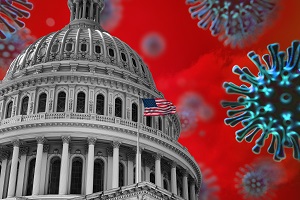 Political partisanship is 27 times more important than the local incidence of COVID-19 in explaining Americans’ willingness to curtail their movements to help stem the spread of the virus, researchers report in Science Advances. “Moreover, all else equal, Democrats are 13.1% less likely to be socially mobile over time compared to independents, while Republicans are 27.8% more likely to be mobile. These differences have tremendous consequences for the ability of the United States to limit the spread of COVID-19 and they show the importance of politics and political considerations for public health, even during a global pandemic.”
Political partisanship is 27 times more important than the local incidence of COVID-19 in explaining Americans’ willingness to curtail their movements to help stem the spread of the virus, researchers report in Science Advances. “Moreover, all else equal, Democrats are 13.1% less likely to be socially mobile over time compared to independents, while Republicans are 27.8% more likely to be mobile. These differences have tremendous consequences for the ability of the United States to limit the spread of COVID-19 and they show the importance of politics and political considerations for public health, even during a global pandemic.”
In a similar study of young adults living in California, published in JAMA Internal Medicine, “self-reported Republican political party affiliation was associated with less frequent physical distancing and participating in social recreational activities that may perpetuate the COVID-19 pandemic.”
 Households are going to continue to be a significant source of SARS-CoV-2 transmission as long as people with suspected or confirmed infections are isolating at home, researchers report in JAMA Network Open. “Prevention strategies, such as increased mask-wearing at home, improved ventilation, voluntary isolation at external facilities, and targeted antiviral prophylaxis, should be further explored,” they say.
Households are going to continue to be a significant source of SARS-CoV-2 transmission as long as people with suspected or confirmed infections are isolating at home, researchers report in JAMA Network Open. “Prevention strategies, such as increased mask-wearing at home, improved ventilation, voluntary isolation at external facilities, and targeted antiviral prophylaxis, should be further explored,” they say.
December 11, 2020
 On Thursday, a US Food and Drug Administration (FDA) advisory committee voted 17-4 to recommend that the agency issue an emergency use authorization for the COVID-19 vaccine made by Pfizer and BioNTech, STAT reports. People as young as 16 would be eligible for the vaccine if the recommendation is followed as worded. Top FDA officials said Friday that the agency “will rapidly work toward finalization and issuance of an emergency use authorization.” That could happen within days, with immunizations starting shortly after.
On Thursday, a US Food and Drug Administration (FDA) advisory committee voted 17-4 to recommend that the agency issue an emergency use authorization for the COVID-19 vaccine made by Pfizer and BioNTech, STAT reports. People as young as 16 would be eligible for the vaccine if the recommendation is followed as worded. Top FDA officials said Friday that the agency “will rapidly work toward finalization and issuance of an emergency use authorization.” That could happen within days, with immunizations starting shortly after.
AstraZeneca is taking its COVID-19 vaccine and teaming up with Russia’s RDIF wealth fund, which funded the Sputnik V vaccine, to test the effects of combining the two products, Reuters reports. “AstraZeneca, in a statement on Friday, said it was considering how it could assess combinations of different vaccines, and would soon begin exploring with Russia’s Gamaleya Institute, which developed Sputnik V, whether two common cold virus-based vaccines could be successfully combined.”
In the US, women are more nervous than men about the rapidly developed COVID-19 vaccines, according to a Reuters/Ipsos poll. The survey showed that 35% of women were “not very” or “not at all” interested in getting a vaccine, an increase of 9% over a similar poll conducted in May. The proportion of women who were “very” or “somewhat” interested in getting vaccinated was 55%, a decline of about 6%. At both time points, 68% of men said they would get vaccinated.
 Surveys by McKinsey & Company indicate that there are three main groups of Americans when it comes to attitudes about COVID-19 vaccination: interested adopters (37%), cautious adopters (45%), and unlikely adopters (18%). The first group is most eager to get a shot, whereas the cautious adopters want to wait a bit before getting the vaccine. The final group is unlikely to be immunized.
Surveys by McKinsey & Company indicate that there are three main groups of Americans when it comes to attitudes about COVID-19 vaccination: interested adopters (37%), cautious adopters (45%), and unlikely adopters (18%). The first group is most eager to get a shot, whereas the cautious adopters want to wait a bit before getting the vaccine. The final group is unlikely to be immunized.
Sanofi and GlaxoSmithKline announced Monday that their vaccine candidate provided an insufficient immune response in older people in clinical trials, “delaying its launch to late next year and marking a setback in the global fight against the pandemic,” Reuters reports. The story notes that “the news, which came on the same day as Australia axed a domestic vaccine project, is also a blow for many governments that have booked hundreds of millions of doses of the shot, including the European Union, United States, and Britain.”
In Morbidity and Mortality Weekly Report, researchers report that during the pandemic, the total number of emergency department visits for child abuse and neglect fell but the percentage of visits that resulted in hospitalization increased. This raises “concerns that victims might not have received care and that severity of injuries remained stable or worsened,” the authors say.
Parents’ thoughts on school reopening during the pandemic vary based on race/ethnicity, according to another study in MMWR. Parents from minority communities, relative to those who were non-Hispanic white, were more concerned about compliance with mitigation measures, safety, and the possibility of their child contracting COVID-19 or bringing it home.
A committee of the European Medicines Agency (EMA) has updated the indication for remdesivir (Veklury; Gilead Sciences), which has been authorized on an emergency basis for the treatment of COVID-19 patients 12 and older with a body weight of at least 40 kg and pneumonia requiring supplemental oxygen. The indication now clarifies that supplemental oxygen includes low- or high-flow oxygen or other noninvasive ventilation at the start of treatment.
 French researchers reporting in PLOS ONE say specially trained dogs may be able to sniff out people infected with COVID-19. Using sweat samples from symptomatic positive and asymptomatic negative individuals, they found that the six dogs—which had been previously training in explosive sniffing, colon cancer detecting, or search and rescue—had success rates of 76% to 100%.
French researchers reporting in PLOS ONE say specially trained dogs may be able to sniff out people infected with COVID-19. Using sweat samples from symptomatic positive and asymptomatic negative individuals, they found that the six dogs—which had been previously training in explosive sniffing, colon cancer detecting, or search and rescue—had success rates of 76% to 100%.
L.A. McKeown contributed parts of today’s Dispatch.
December 10, 2020
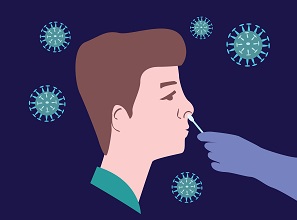 Late Wednesday, the US Food and Drug Administration (FDA) authorized its first direct-to-consumer test kit for COVID-19. The LabCorp Pixel Home Collection Kit “allows an individual to self-collect a nasal swab sample at home and then send that sample for testing to LabCorp. Positive or invalid test results are then delivered to the user by phone call from a healthcare provider. Negative test results are delivered via email or online portal,” a press release notes.
Late Wednesday, the US Food and Drug Administration (FDA) authorized its first direct-to-consumer test kit for COVID-19. The LabCorp Pixel Home Collection Kit “allows an individual to self-collect a nasal swab sample at home and then send that sample for testing to LabCorp. Positive or invalid test results are then delivered to the user by phone call from a healthcare provider. Negative test results are delivered via email or online portal,” a press release notes.
Phase II/III results supporting the safety and efficacy of the BNT162b2 mRNA COVID-19 vaccine (BioNTech/Pfizer) are now published in the New England Journal of Medicine. The multinational, placebo-controlled, observer-blinded, randomized controlled trial enrolling more than 45,500 patients found that the agent was 95% effective in preventing COVID-19. Among 10 cases of severe infection with onset after the first dose, nine occurred in placebo-treated patients and one in a vaccine recipient.
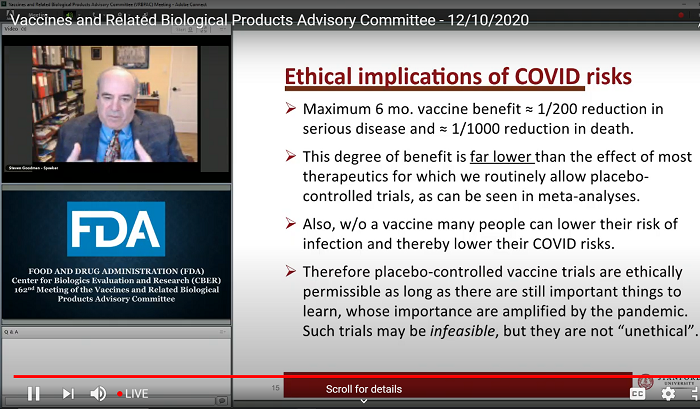 That evidence is now being mulled by the FDA’s Vaccines and Related Biological Products Advisory Committee (AdComm), meeting at this very minute to discuss vaccine risks and benefits then make recommendations on approval. Briefing materials are available online, and the meeting is being broadcast live, by webcast, and is scheduled to wrap up at 6 PM ET. The Moderna vaccine AdComm is next week, on December 17.
That evidence is now being mulled by the FDA’s Vaccines and Related Biological Products Advisory Committee (AdComm), meeting at this very minute to discuss vaccine risks and benefits then make recommendations on approval. Briefing materials are available online, and the meeting is being broadcast live, by webcast, and is scheduled to wrap up at 6 PM ET. The Moderna vaccine AdComm is next week, on December 17.
Meanwhile in Europe, where the European Medicines Agency (EMA) is also reviewing the vaccine for approval, documents related to the BioNTech/Pfizer submission were “unlawfully accessed,” a statement on the BioNTech website confirms, when the agency was hit with a cyber-attack announced by the EMA yesterday.
The United States has set a new record for daily COVID-19 deaths, surpassing 3,000. Governor Tom Wolf of Pennsylvania has tested positive for COVID-19, becoming the ninth US governor to do so, the New York Times reports (although one of the other cases may have been a false positive). “As this virus rages, my positive test is a reminder that no one is immune from COVID,” Wolf said in a series of Tweets. “Following all precautions as I have done is not a guarantee, but it is what we know to be vital to stopping the spread of the disease.”
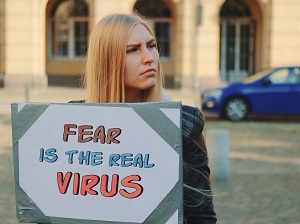 Policy makers and public health officials sometimes shy away from communicating “scientific uncertainty,” fearing that this could generate mistrust, according to investigators in JAMA Network Open. On the contrary, their survey of middle-aged Germans suggested that respondents would prefer uncertainty over more limited updates. And in fact, “for those who are currently skeptical of governmental containment measures, communication expressing uncertainty appeared to be particularly effective in motivating them to comply with the measures,” the research letter concludes. “It may even be that admitting and communicating scientific uncertainty to the public fosters trust.”
Policy makers and public health officials sometimes shy away from communicating “scientific uncertainty,” fearing that this could generate mistrust, according to investigators in JAMA Network Open. On the contrary, their survey of middle-aged Germans suggested that respondents would prefer uncertainty over more limited updates. And in fact, “for those who are currently skeptical of governmental containment measures, communication expressing uncertainty appeared to be particularly effective in motivating them to comply with the measures,” the research letter concludes. “It may even be that admitting and communicating scientific uncertainty to the public fosters trust.”
Identical 60-year-old male twins, who lived and worked together, and who both fell ill with COVID-19, are shedding some light on why the disease hits some people harder than others, researchers write in Annals of Internal Medicine. “Despite having similar presentations and early treatment, Twin 1 was discharged without complications and recovered uneventfully [whereas] Twin 2 required more care and had 4 days of invasive ventilation,” a press release notes. “The authors suggest the differences in the virus, such as differences in the infecting dose or viruses with different mutations, may explain differences in illness severity.”
Also in Annals, researchers from Wuhan, China, reviewed patterns of viral polymerase chain reaction (PCR) positivity, and the timing of seropositivity in relation to disease severity. In their retrospective analysis, the virus appeared to peak within the first few days, whereas seroconversion rates peaked within 4 to 5 weeks.
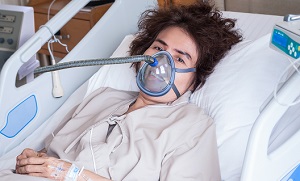 COVID-19 prevalence and related mortality is doubled among patients with heart transplants, researchers report in JACC: Heart Failure. Immunosuppressive drug regimens make this group trickier to manage, but as TCTMD’s Caitlin Cox reports, this series out of Italy offers some insights.
COVID-19 prevalence and related mortality is doubled among patients with heart transplants, researchers report in JACC: Heart Failure. Immunosuppressive drug regimens make this group trickier to manage, but as TCTMD’s Caitlin Cox reports, this series out of Italy offers some insights.
In the journal Cancer, researchers report that nearly 72% of Black patients with gynecologic cancer and COVID-19 in their New York City series required hospitalization, as compared with 46% of non-Black patients. Black patients accounted for just one-third of the cohort, but 41% of deaths. “The underlying causes of racial disparities are multifactorial and include limited access to healthcare, social determinants of health, racism, and discrimination,” senior author Bhavana Pothuri, MD, said in a press release. “The COVID-19 pandemic has only heightened these and brought awareness.”
Changes in human activity believed to be due to the COVID-19 pandemic have had a profound impact on the environment—as viewed from space. At a virtual press conference hosted by the American Geophysical Union, researchers reported that deforestation rates have changed—rising in Brazil’s Amazon rainforest as well as in parts of Indonesia and the Congo, but slowing in Columbia and Peru. Elsewhere air pollution is down, water quality is up, and snow is more reflective—likely due to less accumulation of dust and soot. A NASA press release sums it up.
Shelley Wood contributed today’s Dispatch.
December 9, 2020
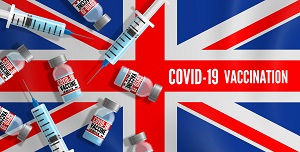 Two healthcare workers in the United Kingdom reported anaphylactoid reactions after receiving the COVID-19 vaccine on the first day of mass immunization there, leading regulators to advise people with a history of significant allergies not to get the vaccine from Pfizer and BioNTech, Reuters reports. Both workers had such a history; they are recovering well from the adverse reactions.
Two healthcare workers in the United Kingdom reported anaphylactoid reactions after receiving the COVID-19 vaccine on the first day of mass immunization there, leading regulators to advise people with a history of significant allergies not to get the vaccine from Pfizer and BioNTech, Reuters reports. Both workers had such a history; they are recovering well from the adverse reactions.
In the United States, a shortage of dry ice is complicating plans to vaccinate people in rural areas once a vaccine becomes available, according to another Reuters story. The Pfizer-BioNTech vaccine must be kept at very low temperatures before use, which requires either specialized ultracold freezers or dry ice.
On Wednesday, Health Canada authorized emergency use of the Pfizer-BioNTech vaccine, which is also likely to become the first made available in the US. An advisory committee of the US Food and Drug Administration (FDA) is set to consider an emergency use authorization on Thursday. Background material released ahead of the meeting by agency scientists suggests the outlook for an EUA is good. As STAT reports, they conclude that the vaccine is “highly effective,” with data that “suggest a favorable safety profile.” The documents also provide new information on side effects, including sore arms and headaches.
Another COVID-19 vaccine made by Sinopharm, a Chinese company, is 86% effective, according to an announcement from health officials from the United Arab Emirates, NPR reports. The UAE, which conducted a trial with 31,000 volunteers, approved the vaccine for emergency use in certain groups back in September.
The proportion of people in the US who say they will get a COVID-19 vaccine seems to be growing, according to new survey data from Bospar, a public relations firm. Among those asked at the beginning of December, 79.3% said they will get the shot, up from about 69.3% in May.

Using data from the University of Minnesota’s COVID-19 Hospitalization Tracking Project, NPR has created a tool that will tell Americans whether hospitals near them are filling up with patients with COVID-19. If COVID-19 hospitalizations account for more than 10% of total beds, it’s concerning, with anything above 20% representing “extreme stress.”
Healthcare workers, social/education workers, and other essential workers have an elevated risk of severe COVID-19, researchers report in Occupational & Environmental Medicine based on data from the UK Biobank. The risk was by far the highest among healthcare workers, who had a 7.43-fold greater risk compared with nonessential workers.
In CMAJ, a group of experts makes recommendations for the delivery of cardiovascular care during the second wave of COVID-19 in Canada. After seeing the reduction in care delivery and the deferral of elective procedures during the first wave, they call for a different approach. “We suggest an approach, informed by local data and experience, which balances the need for an expected rise in demand for healthcare resources to ensure appropriate COVID-19 surge capacity, with continued delivery of essential cardiovascular care.”
Hydroxychloroquine fell short as postexposure prophylaxis to prevent severe SARS-CoV-2 infection, according to randomized data in the Annals of Internal Medicine. There was no clinically meaningful effect of giving hydroxychloroquine for 14 days to close contacts of people diagnosed with SARS-CoV-2 infection.
 Also in Annals, a Swiss study shows that about one-third of patients who tested positive for the virus reported at least one symptom 30 to 45 days later. Fatigue, dyspnea, and loss of taste or smell were the main symptoms that persisted. “Recognizing the persistence of symptoms could legitimize patients' concerns in an unknown and new disease,” the researchers say. “Adequate communication can provide reassurance, reduce anxiety, and potentially optimize recovery.”
Also in Annals, a Swiss study shows that about one-third of patients who tested positive for the virus reported at least one symptom 30 to 45 days later. Fatigue, dyspnea, and loss of taste or smell were the main symptoms that persisted. “Recognizing the persistence of symptoms could legitimize patients' concerns in an unknown and new disease,” the researchers say. “Adequate communication can provide reassurance, reduce anxiety, and potentially optimize recovery.”
December 8, 2020
 The United Kingdom began its mass COVID-19 vaccination program on Tuesday, with a 90-year-old grandmother receiving the first shot, Reuters reports. The second shot went to one William Shakespeare, according to pun-filled story from BBC News.
The United Kingdom began its mass COVID-19 vaccination program on Tuesday, with a 90-year-old grandmother receiving the first shot, Reuters reports. The second shot went to one William Shakespeare, according to pun-filled story from BBC News.
But the arrival of mass vaccination programs “matters less in the short term than you may think,” David Leonhardt writes in the New York Times. “The vaccines will be much less effective at preventing death and illness in 2021 if they are introduced into a population where the coronavirus is raging—as is now the case in the US. That’s the central argument of a new paper in the journal Health Affairs.” One of the authors of that study is Rochelle Walensky, MD, who President-Elect Joe Biden has selected to head the Centers for Disease Control and Prevention (CDC).
All's well that ends well ✍️
— BBC News (UK) (@BBCNews) December 8, 2020
William Shakespeare was the second person in the UK to get the Covid-19 vaccine, and was hotly pursued by lots of puns https://t.co/1xWnMLLif8
Another note of caution comes from STAT, with Olivia Goldhill writing that a plan from leaders of Operation Warp Speed to vaccinate 20 million Americans in December “seems unrealistic” based on feedback from healthcare systems in four states. These systems “told STAT they expect to still be giving staff their first shots in mid-January. These workers would then receive their second vaccine dose 3 to 4 weeks later, depending on the vaccine, and would receive the full immunization effects a week after that, in mid-February.”
Phase III data on the COVID-19 vaccine from AstraZeneca and the University of Oxford have been published in the Lancet. An interim analysis of four trials in Brazil, South Africa, and the UK indicates that the vaccine has acceptable safety and effectively prevents symptomatic disease. No hospitalizations or severe disease have been reported in the vaccinated group so far.
Declines in PCI for STEMI in New York State during the pandemic were largely confined to counties with a high density of COVID-19 deaths, researchers report in the American Journal of Cardiology. There was a 43% decrease in procedures per week in high-density counties and only a 4% reduction in low-density counties. Risk-adjusted in-hospital mortality rates did not change during the outbreak regardless of the density of COVID-19 deaths.
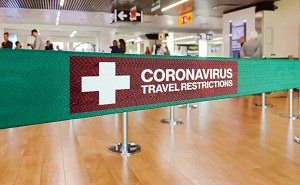 Travel restrictions can be effective for controlling spread of SARS-CoV-2 under the right circumstances, a modelling study in the Lancet Public Health indicates. “Stringent travel restrictions might have little impact on epidemic dynamics except in countries with low COVID-19 incidence and large numbers of arrivals from other countries, or where epidemics are close to tipping points for exponential growth,” the researchers say. “Countries should consider local COVID-19 incidence, local epidemic growth, and travel volumes before implementing such restrictions.”
Travel restrictions can be effective for controlling spread of SARS-CoV-2 under the right circumstances, a modelling study in the Lancet Public Health indicates. “Stringent travel restrictions might have little impact on epidemic dynamics except in countries with low COVID-19 incidence and large numbers of arrivals from other countries, or where epidemics are close to tipping points for exponential growth,” the researchers say. “Countries should consider local COVID-19 incidence, local epidemic growth, and travel volumes before implementing such restrictions.”
The attack rate of SARS-CoV-2 is estimated to have reached 76% in the Brazilian Amazon in October, researchers report in Science. “This is higher than in São Paulo, in southeastern Brazil, where the estimated attack rate in October is 29%,” they write. “These results confirm that, when poorly controlled, COVID-19 can infect a high fraction of the population causing high mortality.”
On NPR Morning Edition, Francis Collins, MD, PhD, director of the US National Institutes of Health (NIH) discusses how COVID-19 vaccines will be distributed to Americans, efforts to combat vaccine hesitancy, and the inclusion of children in vaccine trials. He was hopeful about the coming months: “I think there's a reason to be optimistic that by the summer, we may get to the point where regular social gatherings can happen.”
There was no increase in stillbirths in England during the pandemic, data in JAMA show. That contrasts with a prior single-center study “and is reassuring given the concerns about patients, including pregnant women, receiving fewer services or being hesitant to access healthcare during the pandemic,” the researchers say. A second study in JAMA showed no changes in preterm or stillbirth rates at two hospitals in Philadelphia, PA, as SARS-CoV-2 spread.
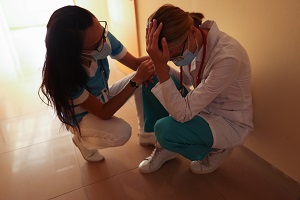 The American Association for Respiratory Care (AARC) and the American Heart Association (AHA) are urging the use of protective measures as COVID-19 case numbers continue to surge across the country. They highlight the impact on the healthcare system: “The tireless cadre of healthcare professionals, such as physicians, nurses, respiratory therapists, first responders, emergency medical technicians, and others who put their lives at risk each day to combat the deadly coronavirus, continue to be asked to do more, as burnout and other mental health issues pose a serious risk to their well-being.”
The American Association for Respiratory Care (AARC) and the American Heart Association (AHA) are urging the use of protective measures as COVID-19 case numbers continue to surge across the country. They highlight the impact on the healthcare system: “The tireless cadre of healthcare professionals, such as physicians, nurses, respiratory therapists, first responders, emergency medical technicians, and others who put their lives at risk each day to combat the deadly coronavirus, continue to be asked to do more, as burnout and other mental health issues pose a serious risk to their well-being.”
A CMAJ study delving into COVID-19 complications confirmed strong associations and high absolute risk with viral pneumonia, respiratory failure, acute kidney failure, and sepsis. There were also strong associations, but low absolute risk, with myocarditis, disseminated intravascular coagulation, and pneumothorax.
December 7, 2020
 On Sunday, shipments of the COVID-19 vaccine developed by Pfizer and BioNTech arrived in the United Kingdom, the first country to authorize the product, with vaccinations expected to start tomorrow, the Associated Press reports. “Around 800,000 doses of the vaccine were expected to be in place for the start of the immunization program on Tuesday, a day that Health Secretary Matt Hancock has reportedly dubbed as ‘V-Day,’ a nod to triumphs in World War II.”
On Sunday, shipments of the COVID-19 vaccine developed by Pfizer and BioNTech arrived in the United Kingdom, the first country to authorize the product, with vaccinations expected to start tomorrow, the Associated Press reports. “Around 800,000 doses of the vaccine were expected to be in place for the start of the immunization program on Tuesday, a day that Health Secretary Matt Hancock has reportedly dubbed as ‘V-Day,’ a nod to triumphs in World War II.”
Some US Food and Drug Administration (FDA) news: an advisory committee will meet on Thursday to consider emergency authorization of the vaccine in the United States; the first at-home test designed to detect both SARS-CoV-2 and influenza (A and B strains)—the Quest Diagnostics RC COVID-19 +Flu RT-PCR Test—has been authorized; and the agency updated its guidance on conducting clinical trials during the pandemic, providing a new Q&A dealing with disposal of unused investigational drug products when a study participants can’t get it back to the study site.
 In Germany, an expert panel has said the first doses of COVID-19 vaccine should go to residents and staff in senior citizen and nursing homes, as well as to people older than 80, Reuters reports. Healthcare workers are also among the high-priority groups. Meanwhile, German officials are worried that open-air stands selling mulled wine—which have started turning up around the country after pandemic-related closures of most Christmas markets—could worsen spread of the virus.
In Germany, an expert panel has said the first doses of COVID-19 vaccine should go to residents and staff in senior citizen and nursing homes, as well as to people older than 80, Reuters reports. Healthcare workers are also among the high-priority groups. Meanwhile, German officials are worried that open-air stands selling mulled wine—which have started turning up around the country after pandemic-related closures of most Christmas markets—could worsen spread of the virus.
In Morbidity and Mortality Weekly Report, the COVID-19 Response Team of the US Centers for Disease Control and Prevention (CDC) reiterates what’s needed to bring the pandemic under control and try to get life back to normal: “universal face mask use, physical distancing, avoiding nonessential indoor spaces, increasing testing, prompt quarantine of exposed persons, safeguarding those at increased risk for severe illness or death, protecting essential workers, postponing travel, enhancing ventilation and hand hygiene, and achieving widespread COVID-19 vaccination coverage.” Adhering to these strategies “will protect healthcare, essential businesses, and schools, bridging to a future with high community coverage of effective vaccines and safe return to more activities in a range of settings.”
Other MMWR papers detail the investigation of a COVID-19 outbreak among Marshallese and Hispanic/Latino communities in Arkansas and new data affirming the disproportionate impact of the pandemic on Hispanic/Latino individuals, this time among residents of Denver, CO.
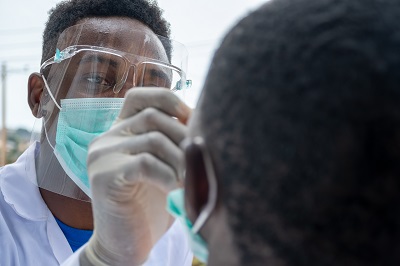 A study in JAMA Network Open provides additional insights into racial/ethnic differences in how residents of New York City are experiencing COVID-19. Black and Hispanic patients were more likely to test positive for the virus, but among patients who required hospitalization, Black individuals were less likely than their white counterparts to have severe illness and to die or be discharged to hospice.
A study in JAMA Network Open provides additional insights into racial/ethnic differences in how residents of New York City are experiencing COVID-19. Black and Hispanic patients were more likely to test positive for the virus, but among patients who required hospitalization, Black individuals were less likely than their white counterparts to have severe illness and to die or be discharged to hospice.
Appendiceal perforation among pediatric patients increased at Inova Children’s Hospital in northern Virginia in the 10 weeks after public schools were closed in the state, researchers report in another study in JAMA Network Open. “Although the reduction in ‘unnecessary’ emergency care may be welcomed by some, broad avoidance of the emergency department may lead to increased morbidity and mortality in both children and adults,” they conclude.
December 4, 2020
President-elect Joe Biden said he will ask all Americans to wear masks for 100 days after he’s inaugurated and issue an order requiring face coverings “where the federal government has authority,” Bloomberg reports. Biden also said he’d be happy to publicly get a COVID-19 vaccine to encourage the public to follow suit.
 A study in PNAS provides additional support for universal mask use to stem the spread of the virus. In Germany, regions that implemented a mask mandate saw a 45% reduction in new infections after 20 days compared with regions that had no such requirements.
A study in PNAS provides additional support for universal mask use to stem the spread of the virus. In Germany, regions that implemented a mask mandate saw a 45% reduction in new infections after 20 days compared with regions that had no such requirements.
Using an interactive tool on the New York Times website, Americans can get an idea of how long they’ll have to wait for COVID-19 vaccine based on their age, county of residence, occupation, and COVID-related health risks. “If you’re a healthy American, you may wait many months for your turn.”
The already-announced recommendations from the Advisory Committee on Immunization Practices (ACIP), which provides guidance to the US Centers for Disease Control & Prevention (CDC), on who should be given the first shot at a COVID-19 vaccine have now been published in Morbidity and Mortality Weekly Report. Healthcare workers and residents of long-term care facilities will be prioritized.
STAT’s Helen Branswell spoke with the lone member of ACIP who voted against putting residents of long-term care facilities at the front of the COVID-19 vaccination line along with healthcare workers. Helen Keipp Talbot, MD, “raised serious concerns . . . about using the vaccines in the frail elderly, noting there are no data yet to suggest the vaccines work in this population.” None of the US-based phase III trials have specifically tested vaccination in this group.
Another STAT story delves into how wealthy and well-connected people, who have received special treatment throughout the pandemic, are likely to be able to skip the line for COVID-19 vaccines. “It could happen in any number of ways, [medical experts and ethicists] said: fudging the definition of ‘essential workers’ or ‘high-risk’ conditions, lobbying by influential industries, physicians caving to pressure to keep their patients happy, and even through outright bribery or theft.”
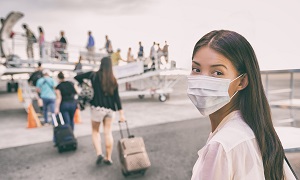 Several airline companies are floating the idea of ‘COVID-19-tested’ flights wherein people would undergo SARS-CoV-2 tests 5 days before an international flight, to increase confidence in air travel safety and potentially skip quarantine upon arrival. Reuters reports that KLM and Delta airlines are pioneering the idea with a transatlantic route between Amsterdam and Atlanta, starting December 15, while Alitalia has announced a similar plan for flights between Rome and New York.
Several airline companies are floating the idea of ‘COVID-19-tested’ flights wherein people would undergo SARS-CoV-2 tests 5 days before an international flight, to increase confidence in air travel safety and potentially skip quarantine upon arrival. Reuters reports that KLM and Delta airlines are pioneering the idea with a transatlantic route between Amsterdam and Atlanta, starting December 15, while Alitalia has announced a similar plan for flights between Rome and New York.
The World Health Organization is purportedly mulling ‘e-vaccination certificates’ that people could carry in a digital format to show that they’ve received a vaccine, to facilitate international travel.
In the Journal of the American Society of Echocardiography, researchers from the University of Pennsylvania describe a novel point-of-care ultrasound alliance between emergency medicine, internal medicine, and cardiology and how it responded to the COVID-19 pandemic. “This initiative minimized the number of providers exposed to COVID-19 patients [and] maximized infection control precautions, while also appropriately triaging the need for comprehensive echocardiography,” the authors write.
During the COVID-19 pandemic, there has been a surge in overdose-related cardiac arrest in the United States, according to research in JAMA Psychiatry. “The temporal similarities to decreased mobility suggest that the fallout from the COVID-19 pandemic—perhaps especially social isolation—is sharply accelerating fatal overdose trends,” the authors say.
 California Governor Gavin Newsome has implemented new restrictions on businesses and activities as COVID-19 numbers surge in the state, the Los Angeles Times reports: “The rules, which take effect Saturday, are designed to last for at least 21 days once local critical care facilities approach capacity. But with so many hospitals in the state experiencing a rapid surge of patients with the disease, the ‘regional stay-at-home’ order described by Newsom is likely to limit activities across California throughout the holiday season and possibly into the new year.”
California Governor Gavin Newsome has implemented new restrictions on businesses and activities as COVID-19 numbers surge in the state, the Los Angeles Times reports: “The rules, which take effect Saturday, are designed to last for at least 21 days once local critical care facilities approach capacity. But with so many hospitals in the state experiencing a rapid surge of patients with the disease, the ‘regional stay-at-home’ order described by Newsom is likely to limit activities across California throughout the holiday season and possibly into the new year.”
December 3, 2020
 On Wednesday, the United States saw its highest COVID-19 death toll of the pandemic (at least 2,760), exceeding the spring peak on April 15 (2,752 deaths), the New York Times reports. Hospitalizations set a single-day record, too: more than 100,000 Americans with COVID-19 are currently occupying hospital beds. Whereas in the spring virus activity was concentrated in New York and New England, the pain is now spread more widely across the country. “As staggering as it is, the death toll reported Wednesday appears likely only to worsen, experts say, as the delayed effects of Thanksgiving travel are felt. And many Americans are now weighing how to celebrate Christmas and New Year’s.”
On Wednesday, the United States saw its highest COVID-19 death toll of the pandemic (at least 2,760), exceeding the spring peak on April 15 (2,752 deaths), the New York Times reports. Hospitalizations set a single-day record, too: more than 100,000 Americans with COVID-19 are currently occupying hospital beds. Whereas in the spring virus activity was concentrated in New York and New England, the pain is now spread more widely across the country. “As staggering as it is, the death toll reported Wednesday appears likely only to worsen, experts say, as the delayed effects of Thanksgiving travel are felt. And many Americans are now weighing how to celebrate Christmas and New Year’s.”
According to CBS News, Florida has become the third US state to see 1 million COVID-19 cases, following Texas and California: “This came just 1 day after Florida Governor Ron DeSantis held a press conference where he denounced mask mandates and insisted that schools stay open for in-person instruction.”
Globally, there are now nearly 65 million confirmed cases and almost 1.5 million deaths, with the US leading in both categories (about 14 million and 274,000, respectively), according to the Johns Hopkins COVID-19 Dashboard.
 Valéry Giscard d’Estaing, France’s president from 1974 to 1981, died at age 94 from complications related to COVID-19, The Guardian reports. The current president, Emmanuel Macron, called Giscard a “servant of the state, a politician of progress and freedom,” adding that “his death has plunged the French nation into mourning.”
Valéry Giscard d’Estaing, France’s president from 1974 to 1981, died at age 94 from complications related to COVID-19, The Guardian reports. The current president, Emmanuel Macron, called Giscard a “servant of the state, a politician of progress and freedom,” adding that “his death has plunged the French nation into mourning.”
On Wednesday, the Centers for Disease Control and Prevention (CDC) has said that its recommended 14-day quarantine period for people exposed to someone with COVID-19 remains the best way to reduce risk of spread, but that it can be shortened in certain circumstances—to 10 days without a COVID-19 test if the person has reported no symptoms or to 7 days with a negative test if the person has remained asymptomatic. A CDC official, however, urged people to follow specific guidance from their local public health authorities based on local conditions and needs.
Interim results from the World Health Organization’s (WHO) Solidarity trial have been published in the New England Journal of Medicine, confirming earlier reports that none of the four drugs evaluated in patients hospitalized with COVID-19—remdesivir (Veklury; Gilead Sciences), hydroxychloroquine, lopinavir-ritonavir, and interferon—reduced 28-day mortality relative to local standard of care. An accompanying editorial examines the implications.
In an NEJM perspective, the WHO Ad Hoc Expert Group on the Next Steps for COVID-19 Vaccine Evaluation discuss why placebo-controlled trials of COVID-19 vaccines are still needed: “We can address important needs with continued follow-up of placebo recipients in phase III trials, use of placebo controls in large, simple safety trials, and clinical data from placebo-controlled, randomized trials evaluating new vaccines. A concerted global effort to collect such data while it’s still possible would increase the likelihood of reliably identifying multiple vaccines with favorable benefit–risk profiles. These studies would go far toward earning the broad public confidence required for widespread vaccine acceptance so that we can bring this pandemic to an end.”
 STAT notes that Moderna is set to test its COVID-19 vaccine, which might be available for emergency use in the coming weeks, in adolescents ages 12 to 17. The TeenCove trial, which is not yet recruiting, aims to enroll 3,000 participants. Pfizer and BioNTech announced in October that they had begun testing their vaccine in the same group.
STAT notes that Moderna is set to test its COVID-19 vaccine, which might be available for emergency use in the coming weeks, in adolescents ages 12 to 17. The TeenCove trial, which is not yet recruiting, aims to enroll 3,000 participants. Pfizer and BioNTech announced in October that they had begun testing their vaccine in the same group.
In a special report, STAT’s Helen Branswell explores how society can make the best use of COVID-19 vaccines when they become available, tackling issues involving rapid rollouts; vaccine hesitancy; getting vaccines to everybody who wants/needs them; what to do about pregnant women and children; sufficient vaccine supplies; and questions about whether vaccines will stem transmission of the virus.
Researchers report on a case of reversible myocardial injury and heart failure associated with SARS-CoV-2 infection in a 2-month-old infant in JACC: Case Reports. “Acute myocardial injury as an atypical presentation of SARS-CoV-2 infection is currently being recognized in the adult population,” they write. “Our case highlights the potential for myocardial involvement in infants with SARS-CoV-2 infection.”
December 2, 2020
The United Kingdom has become the first country to approve the COVID-19 vaccine from Pfizer and BioNTech, Reuters reports: “Britain’s Medicines and Healthcare products Regulatory Agency (MHRA) granted emergency use approval to the Pfizer-BioNTech vaccine, which they say is 95% effective in preventing illness, just 23 days since Pfizer published the first data from its final stage clinical trial.” The move likely puts pressure on the US Food and Drug Administration (FDA) to follow suit, according to STAT.
 In an interview with MSNBC’s Ali Velshi, Francis Collins, MD, PhD, director of the US National Institutes of Health (NIH), said safety did not fall by the wayside in the rush to develop COVID-19 vaccines. “I want to reassure anybody who’s listening that this is being done in a fashion that is absolutely focused on safety and efficacy plus nothing else. Politics have nothing to do with this.”
In an interview with MSNBC’s Ali Velshi, Francis Collins, MD, PhD, director of the US National Institutes of Health (NIH), said safety did not fall by the wayside in the rush to develop COVID-19 vaccines. “I want to reassure anybody who’s listening that this is being done in a fashion that is absolutely focused on safety and efficacy plus nothing else. Politics have nothing to do with this.”
Healthcare workers and residents and staff of nursing homes and other long-term care facilities should be the first to receive a COVID-19 vaccine when one becomes available according to recommendations from the Advisory Committee on Immunization Practices (ACIP), which provides advice to the US Centers for Disease Control and Prevention (CDC), as reported by the Washington Post and others. Residents and employees of long-term care facilities have accounted for nearly 40% of all COVID-19 deaths.
In a letter to the editor in Mayo Clinic Proceedings, Saraschandra Vallabhajosyula, MD, and S. Tanveer Rab, MD, discuss how COVID-19 has changed the field of interventional cardiology. “We propose a unique training pathway, which will serve the acute care needs of the contemporary cardiovascular patient, while not burdening the cardiovascular trainee with additional years of training,” they write. “Though this may have been the logical course of evolution in the decades to come, the COVID-19 pandemic has provided impetus to this change and will likely mark a watershed event in acute cardiovascular care paradigms around the country.”
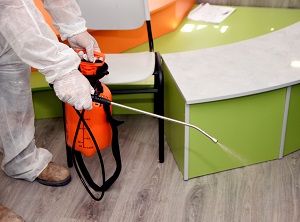 A study in Morbidity and Mortality Weekly Report describes an increase in hospital-acquired carbapenem-resistant Acinetobacter baumannii infection and colonization in a New Jersey acute care hospital experiencing a spike in COVID-19 admissions, which led to deviations in infection prevention and control practices.
A study in Morbidity and Mortality Weekly Report describes an increase in hospital-acquired carbapenem-resistant Acinetobacter baumannii infection and colonization in a New Jersey acute care hospital experiencing a spike in COVID-19 admissions, which led to deviations in infection prevention and control practices.
The US Food and Drug Administration (FDA) reissued the emergency use authorization for COVID-19 convalescent plasma to treat hospitalized patients infected with the coronavirus and revised it to add the Mount Sinai COVID-19 ELISA IgG Antibody Test as an acceptable assay “to be used for the purpose of qualifying high and low titer COVID-19 convalescent plasma in the manufacture of COVID-19 convalescent plasma.”
Providing some insight into how long immunocompromised patients with COVID-19 remain contagious, researchers report in a New England Journal of Medicine letter that “patients with profound immunosuppression after undergoing hematopoietic stem-cell transplantation or receiving cellular therapies may shed viable SARS-CoV-2 for at least 2 months.” They conclude that “the current guidelines for COVID-19 isolation precautions may need to be revised for immunocompromised patients.”
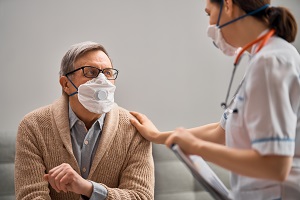 Hospitals in California are running out of room as COVID-19 surges in the state, the New York Times reports: “For all its size and economic might, California has long had few hospital beds relative to its population, a shortfall that state officials now say may prove catastrophic.” Governor Gavin Newsom warned this week that hospitals may have to start turning people away over the next few weeks.
Hospitals in California are running out of room as COVID-19 surges in the state, the New York Times reports: “For all its size and economic might, California has long had few hospital beds relative to its population, a shortfall that state officials now say may prove catastrophic.” Governor Gavin Newsom warned this week that hospitals may have to start turning people away over the next few weeks.
December 1, 2020
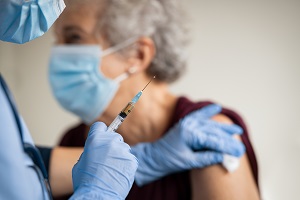 The European Medicines Agency (EMA) has received applications for conditional marketing authorizations for the COVID-19 vaccines from Pfizer and BioNTech and Moderna. Assessment of the applications will proceed quickly, facilitated by rolling reviews that started weeks ago, the agency said. Decisions could be made within weeks.
The European Medicines Agency (EMA) has received applications for conditional marketing authorizations for the COVID-19 vaccines from Pfizer and BioNTech and Moderna. Assessment of the applications will proceed quickly, facilitated by rolling reviews that started weeks ago, the agency said. Decisions could be made within weeks.
A study in Clinical Infectious Diseases based on serologic testing of US blood donations, bolsters prior evidence suggesting that SARS-CoV-2 was already circulating in the United States late last year. SARS-CoV-2 reactive antibodies were detected in samples collected as early as December 13-16, 2019, in California, Oregon, and Washington. Antibodies were also found in samples taken from residents of Connecticut, Iowa, Massachusetts, Michigan, Rhode Island, and Wisconsin in early January.
The COVID States Project has been releasing the results of a survey involving nearly 140,000 Americans across all 50 US states. In a recent report detailing public support for measures aimed at mitigating the spread of the coronavirus, all seven measures listed—stay-at-home orders, business closures, cancellations of major public events, prohibitions on in-person education, limitations on restaurants, and domestic and international travel restrictions—received support from the majority of respondents (60% to 88%).
In Science Translational Medicine, researchers report on the results of lung transplantation in three patients with severe COVID-19 and on analyses of lung tissue from patients who had died from COVID-19 associated pneumonia. “We found that lung disease after severe and prolonged SARS-CoV-2 infection-associated ARDS shared pathological and molecular features with pulmonary fibrosis requiring lung transplantation, suggesting that lung transplantation may be the only option for survival in these patients,” the researchers conclude.
 In a US-based study, “being in a household that received unemployment insurance was associated with fewer health-related social needs, less healthcare delay, and better mental health” during the pandemic, researchers report in JAMA Internal Medicine. However, they note, many people who lost their jobs because of COVID-19 did not receive such support, especially Hispanics and those with lower levels of education. “As unemployment insurance reform develops, policy makers should recognize the important health benefits that [it] may offer working-age people in the US,” the authors conclude.
In a US-based study, “being in a household that received unemployment insurance was associated with fewer health-related social needs, less healthcare delay, and better mental health” during the pandemic, researchers report in JAMA Internal Medicine. However, they note, many people who lost their jobs because of COVID-19 did not receive such support, especially Hispanics and those with lower levels of education. “As unemployment insurance reform develops, policy makers should recognize the important health benefits that [it] may offer working-age people in the US,” the authors conclude.
Black and Hispanic patients bear a disproportionate burden from the multisystem inflammatory syndrome in children (MIS-C) that has been associated with SARS-CoV-2 infection, according to findings out of New York City published in JAMA Network Open. “Although MIS-C is uncommon, clinicians should be aware of the potential enhanced risk of this emerging syndrome among Black and Hispanic children,” the researchers say.
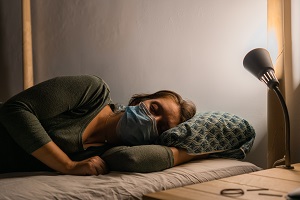 A look at dream reports from people living in Brazil shows that dreams during a pandemic-related lockdown “showed a higher proportion of anger and sadness words, and higher average semantic similarities to the terms ‘contamination’ and ‘cleanness.’ These features seem to be associated with mental suffering linked to social isolation,” investigators report in PLOS ONE. “These results corroborate the hypothesis that pandemic dreams reflect mental suffering, fear of contagion, and important changes in daily habits that directly impact socialization.”
A look at dream reports from people living in Brazil shows that dreams during a pandemic-related lockdown “showed a higher proportion of anger and sadness words, and higher average semantic similarities to the terms ‘contamination’ and ‘cleanness.’ These features seem to be associated with mental suffering linked to social isolation,” investigators report in PLOS ONE. “These results corroborate the hypothesis that pandemic dreams reflect mental suffering, fear of contagion, and important changes in daily habits that directly impact socialization.”
COVID- 19: TCTMD'S Daily Dispatch for November
COVID-19: TCTMD'S Daily Dispatch for October
COVID-19: TCTMD'S Daily Dispatch for September
COVID-19: TCTMD's Daily Dispatch for August
COVID-19: TCTMD’s Daily Dispatch for July
COVID-19: TCTMD’s Daily Dispatch for June
COVID-19: TCTMD’s Daily Dispatch for May
COVID-19: TCTMD’s Daily Dispatch for April
COVID-19: TCTMD’s Daily Dispatch for March
Todd Neale is the Associate News Editor for TCTMD and a Senior Medical Journalist. He got his start in journalism at …
Read Full Bio

Comments